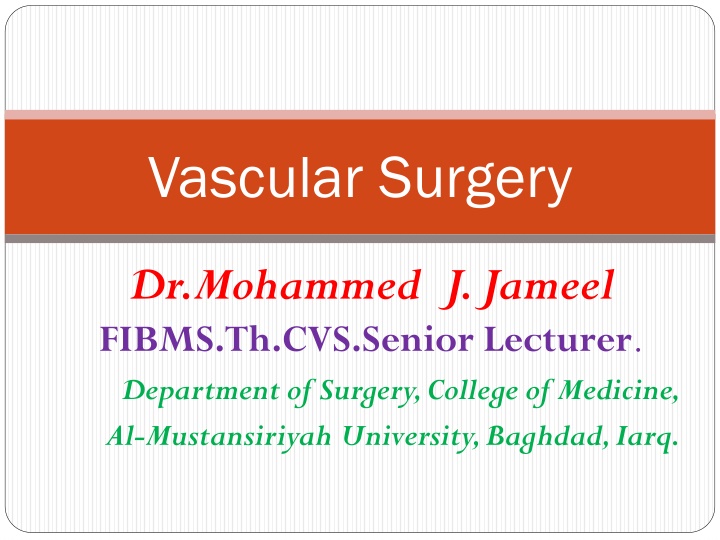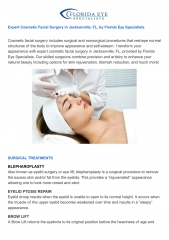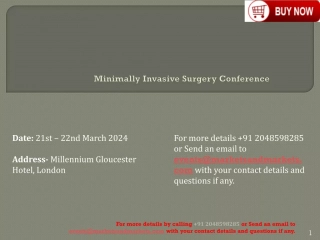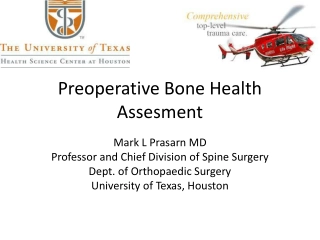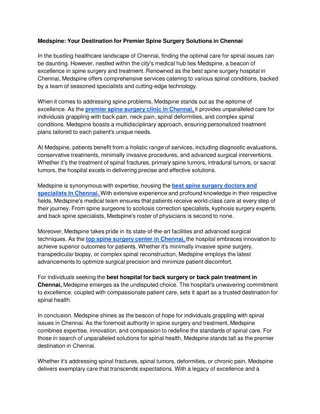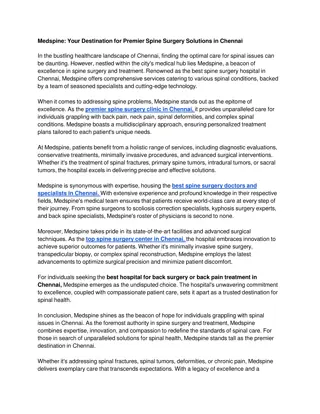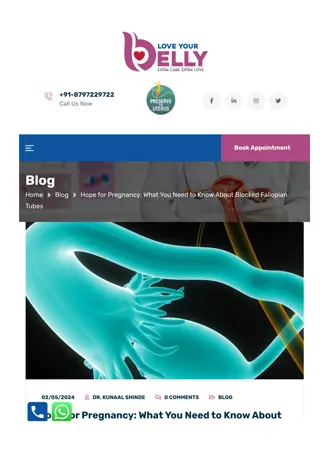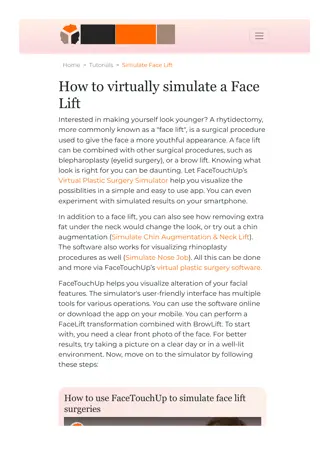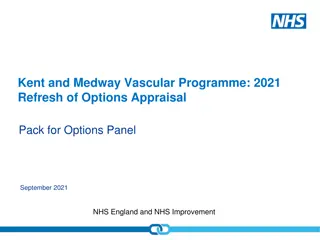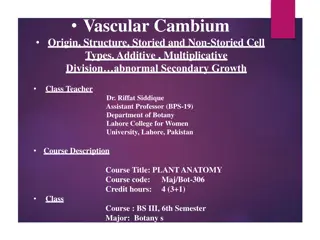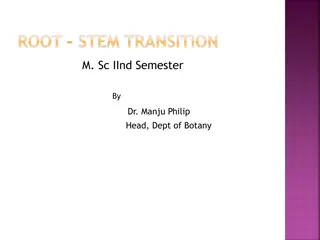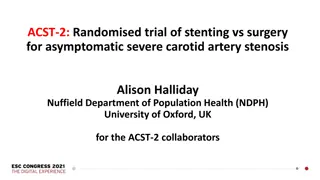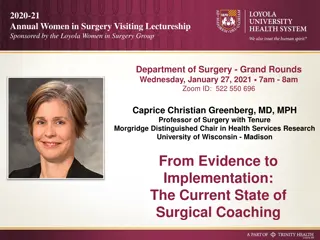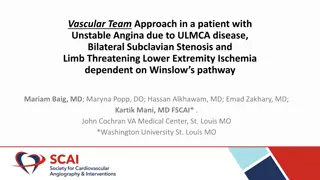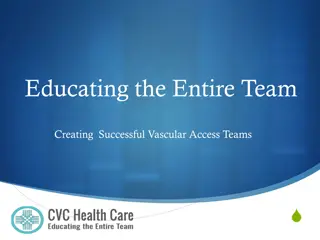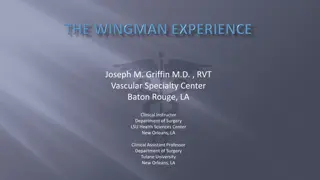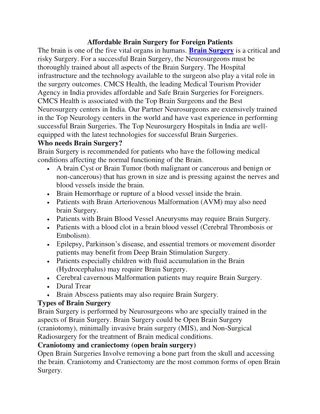Vascular Surgery
Obstructive arterial diseases in vascular surgery encompass acute and chronic occlusions, manifesting with symptoms like claudication, rest pain, and potential complications like gangrene if untreated. This comprehensive guide delves into the types, clinical presentations, and diagnostic features of obstructive arterial diseases.
Download Presentation

Please find below an Image/Link to download the presentation.
The content on the website is provided AS IS for your information and personal use only. It may not be sold, licensed, or shared on other websites without obtaining consent from the author.If you encounter any issues during the download, it is possible that the publisher has removed the file from their server.
You are allowed to download the files provided on this website for personal or commercial use, subject to the condition that they are used lawfully. All files are the property of their respective owners.
The content on the website is provided AS IS for your information and personal use only. It may not be sold, licensed, or shared on other websites without obtaining consent from the author.
E N D
Presentation Transcript
Vascular Surgery Dr.Mohammed J. Jameel FIBMS.Th.CVS.Senior Lecturer. Department of Surgery, College of Medicine, Al-Mustansiriyah University, Baghdad, Iarq.
Obstructive Arterial diseases: - is generally divided to 3 kinds 1.Acute occlusion :- also called Embolic occlusion which arise either from A. Cardiac Emboli :- Large emboli , represent 80% , usually obstruct big arteries e.g. Femoral artery, the source is usually from the left atrium in patients with cardiac arrhythmias especially atrial fibrillation or from mural thrombus after myocardial infarction. B. Atheroemboli: - are small and obstruct small arteries of hands and feet , they arise either from clots inside an aneurysm or from atheromatus plaque which detach from atherosclerotic lesion of big arteries. C.Fs:- sudden onset, the limb distal to obstruction become cold, pulsless, parasthetic, paretic i.e. loss of movement, painful and pale.
O/E:The involved part is normal in size in comparison to other limb, no muscle wasting, no hair loss, normal skin texture with absence of pulse while the pulse in non-involved limb is irregular due to cardiac dysrrythmia .after 6 to 12 hours the involved limb become tender, hard and swollen due to edema of ischemic muscles and with passage of time gangrene will develop if it is not treated urgently and properly. 2.Chronic Occlusion : - caused by atherosclerotic diseases which may involve any segment of arterial system, this produce gradual reduction in vessel diameter which will reduce blood flow to limb distal to site of obstruction , here when the vessel diameter is reduced gradually by 50% the surface area available for blood flow is reduced by 75% and the patient start to complain from intermittent claudicating which cramp-like pain felt in the muscles distal to site of arterial narrowing , it is characterized by :-
1. Brought on by walking 2. Not present on taking the 1ststep. 3. Relieved by standing still. The distance the pt. can walk is called the claudication distance which is nearly similar, claudication mostly involves calf muscles but it can also affect the thigh or buttock. Pt. present with coldness in the involved limb with reduction in pulse volume distal to site of obstruction and muscle wasting , hair loss will develop , arterial bruit can be felt proximal to site of obstruction , with the progress of disease, extensive collateral vessels will develop between area proximal and distal to site of obstruction. When the stenosis increase more pt. will complain from Rest Pain which occur when the limb put in supine or elevation position since the blood flow through the stenosed segment depends on gravity effect in standing position, the pain is felt in the foot and it is worse at night and relieved by standing and if pt. is not treated ulceration and gangrene will develop.
O/E : the involved limb shows features of chronic ischemia mentioned previously , the other limb also shows reduction in the pulse volume, muscle wasting , change in color and temperature since the atherosclerosis is generalized process. 3. Acute on chronic obstruction: - may develop at site of atherosclerotic narrowing which may be obstructed suddenly by an embolus , this will produce mixed features of acute and chronic disease. Investigations:- 1. General investigation: - include complete blood count , lipid profile , renal functions tests , ECG and Echo to assess cardiac function , CXR and Pulmonary function test to assess respiratory function. 2. Dopplar study :- simply it is Ultrasound study of arterial and venous system , it can show the direction of blood flow , the site and length of obstruction and/or narrowing and it is helpful in acute condition when a quick evaluation is needed while in chronic conditions it gives clue for the next step and the need for angiography ,Dopplar study also can be used The Ankle- Brachial Pressure Index (ABPI) which is the ratio of systolic pressure at the ankle to the systolic pressure in the arm , Resting ABPI is about 1 When < 0.9 become indicate some degree of arterial obstruction and when it is below 0.3 suggest imminent necrosis
3. Duplex imaging study: - is B-mode U/S with color coding can shows image of blood flow in the vessel in different colors according to change in the direction and velocity of blood flow i.e. at narrowed segments, also it can shows the phases of arterial pulse since the normal arterial wave is triphasic and with narrowing of the artery it become biphasic and then uniphasic. 4. Angiography: - can give clear cut Dx. For the site of obstruction and /or narrowing, show the site of collateral vessels and the possibility to do surgery, there are 2 kinds of angiography a. the classical angio :-done by injecting radiopaque solution into the arterial system by percutanous catheter inserted to the vascular Tree through Common Femoral artery at the groin b. the new modality CT angio:- is done by new CT Scan machine which can give from 64 to 256 images per second, these high no. of images will give accurate picture of vascular tree with contrast material given intravenously
Mx:- 1.In acute conditions :- usually the Pt. come to emergency department with acute symptoms of pain, cold limb and pallor, the initial steps to Rx such cases are 1.Optimize the intravascular volume by intravenous fluid infusion because in some cases dehydration increase the ischemic features 2.I.v heparin given as 7500 U loading dose followed by 5000 U infusion every 6 hours. (1+2) will increase flow through the narrow vessels and open the collaterals improving distal perfusion 3.Optimize cardiac conditions e.g. Rx heart failure, dysrrthymia etc. 4.Surgery :- In acute conditions we do Embolectomy usually under local anasthesia given in the upper thigh, common Femoral A. is explored, small arteriotomy is done and the embolus is drawn out by especially deigned catheter called Fogarty catheter followed by irrigation of the vascular tree with heparin/saline solution and then arteriotomy is closed, anthor procedure may be added sometimes called Faciotomy which means incision of the facial layers which envelop the muscles of leg as the reperfusion of ischemic muscles will make them swollen and edematous and the tight facial layers will compress the edematous muscles inducing ischemic muscle necrosis ,therefore ; these facial layers must be incised to allow enough space for the reperfusion of swollen muscles. This phenomenon is known as Compartment Syndrome.
2. Mx chronic obstruction 1. stop smoking, exercise and achieve ideal body weight 2. Control serum lipid level and blood sugar for diabetic pt.s 3. pt.s with high blood viscosity venesection may be requiered 4. some arteriodilator drugs may be used e.g Deltiazim , Trental (pentoxphyllin) but they are of limited value. 5. Surgery :- In chronic conditions the atheroseclerotic plaque usually adherent to vessel wall and cannot be removed by Fogarty Catheter , here the mx done by a.percutanous transluminal angioplasty and stenting which is successful for short segment(1- 3)cm stenosis in the Iliac artery and to lesser extent for Femoral and Axillary arteries , it is done by balloon inflation through the narrowed segment of atherosclerotic artery to dilate it and to put metal stent to keep the vessel patent. b.arterial bypass procedure using a graft (either Saphenous vein or synthetic) , it will be anastamosed to an artery proximal to the site of obstruction and then to the vessel distal to obstruction providing an extra channel for blood flow to the limb distal to obstruction ,the long term graft patency is related to 1. Quality of inflow and outflow vessel 2. Graft length 3. Graft type as autologus SaphenousVG has better long term patency than synthetic graft.
